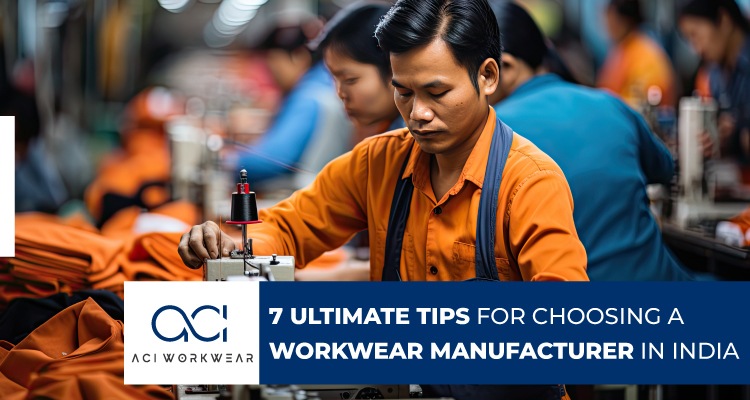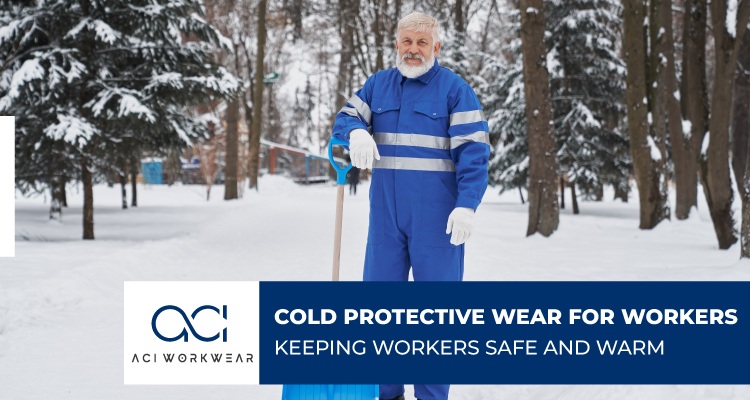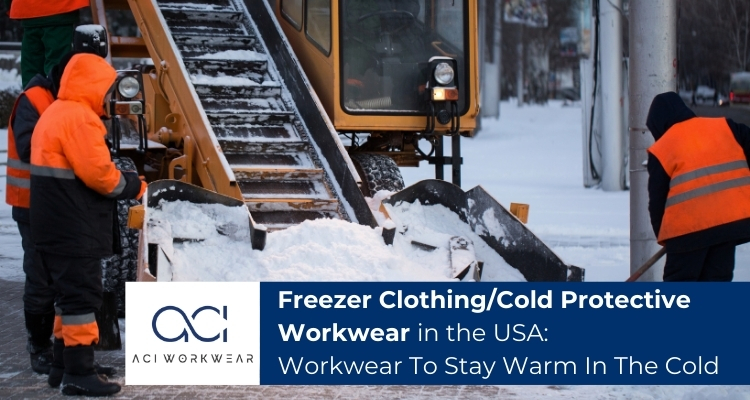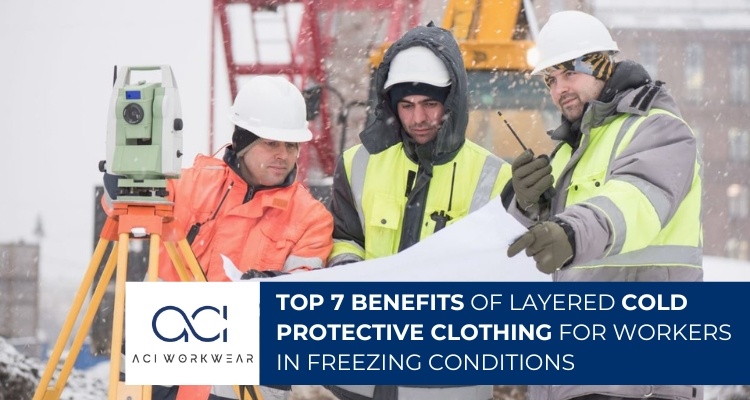
Choosing the Right Workwear: Factors to Consider
27/10/2023
7 Ultimate Tips for Choosing a Workwear Manufacturer in India
27/11/2023The winter approaches and so as the cold hazards. It is difficult for many types of workers to continue their work during winter while keeping themselves safe and warm.
Employers need to take care of this safety matter for their workers. It comes under into employer’s responsibility to keep their workers warm and help them combat the cold hazards.
But, how to ensure that your workspace is safe and keep your workers warm?
Multiple ways can help you! Continue reading to know them all!
What are the Cold Hazards for Workers?
A dropping temperature comes with a number of seasonal risks, especially for the workers obliged to work outside. The cold weather calls for all cold dangers that can stop workers from working with their efficiency.
Plenty of cold hazards are there that drive dangerous health conditions for workers. It is important to learn about them and know how dangerous they are.
1. Frostbite
Frostbite is one of the cold dangers that occur due to the extreme cold. Frostbite damages the skin because of the extreme cold. Frostbite is likely to occur when the skin, nerves, and blood vessels below the top layer of the skin get frizzed.
Working in cold conditions, workers can get their hands or legs frizzed. In such conditions, try to warm the affected area with warm water or place a dry, sterile gauze between the frizzed area.
2. Hypothermia
Hypothermia occurs due to low body temperature, it is a medical emergency that happens when the body starts losing heat faster than producing it. Hypothermia in the body can be felt by shivering, exhaustion, fumbling hands, slurry speech, and drowsiness.
To prevent hypothermia, it is recommended to dress in layers and wear a warm hat, gloves, or anything that can produce heat in your body. This is one of the most dangerous cold hazards which can affect the brain and heart rates, and possibly cause death.
3. Cold Stress
At the point where the body can’t maintain its normal temperature, it calls for cold stress. This is also a serious medical emergency that can lead to serious illness and injuries. It can also result in permanent tissue damage and death.
During cold weather, workers may exposed to cold stress. That is why it is important to plan for cold weather and provide workers with safe and warm clothes.
4. Slipping and Falling
One of the common causes of workplace injuries is slips and falls. Around 20% of workplace injuries are caused by slips and falls. Cold weather conditions increase the possibility of slipping and falling leading to major body injuries such as muscle strains, sprains, fractures, bruises, bumps, cuts, etc.
In winter, to reduce the risks of slipping and falling in the workplace, wear rugged footwear and maintain good working areas with proper lights. Also, make sure to remove the obstacles from all the walkovers in place.
Long-term Health Effects
The high temperature thickens the blood which leads to clotting. Clotting increases the possibility of having heart attacks and strokes in the days following colder weather. The cold air can inflame the lungs and decrease the ability to fight off infections.
All these risks can be reduced with some care and effort. Cold hazards sometimes lead to permanent damage to body parts, therefore it is essential to prevent them with protective wear for workers.
Business Sectors Having Higher Risks of Cold Exposure in Workers
Workers in certain business sectors face a higher risk of cold exposure due to the nature of the work environments they operate in. These sectors often involve outdoor work, exposure to cold temperatures, or working in refrigerated or cold storage facilities.
Here are the business sectors that have a higher risk of cold exposure in the workers.
- Construction
- Mining
- Truck Driving
- Utilities
- Sanitation
- Food Preparation and Distribution
Tips to Keep Workers Safe During Winter
We know that winter weather can pose a variety of hazards to workers, including hypothermia, frostbite, slips and falls, and carbon monoxide poisoning. Employers can take steps to protect their workers from these hazards by providing appropriate clothing and equipment, training workers on winter safety procedures, and implementing monitoring and intervention procedures.
- Educate workers about the cold dangers
- Get prepared for the weather-related injuries
- Teach workers how to dress to stay warm
- Provide workers with winter uniforms
- Be aware of the danger of carbon monoxide
- Encourage breaks
- Implement monitoring and intervention procedures
Cold Protective Clothing and Equipment for Workers
Cold protective clothing and equipment are essential for workers who work outdoors even in cold environments. These items ensure safety and prevent cold stress.
Cold environments and low temperatures can not be avoided, we better find ways to combat them.
The following are the most important protective clothing and equipment that can help in preventing cold risks.
1. Protective Clothing
Working in cold weather, workers will need to wear at least three layers of clothing, including the outer layer, mid layer, and base layer. Layering of clothes provides better insulation.
2. Face/Eye Protection
Protecting the face/eyes from cold hazards is necessary. To protect eyes from snow, UV, or rain employers should provide their workers safety goggles and a knit mask and hat to cover the face, mouth, and ears.
3. Hand Protection
To provide hand protection to workers, factors such as insulation, lining, fabrics, fibres, and waterproofness should be considered. Gloves made of wool, leather, and synthetic material are the best protection for the hands of workers. Provide workers gloves with dual or thermal layers on the inside to keep their hands and fingers warm.
4. Footwear
For footwear, insulated boots are best to protect the feet from cold. They are made of warm materials, such as wool or fleece. For snowy or rainy workplaces, workers should be provided with waterproof boots to keep their feet dry.
5. Socks
Wool socks wick the moisturizer away from the skin and keep the feet warm. Another good option for workers is synthetic socks to work in cold weather.
We Care for Your Workers!
Keeping your workers safe and warm during the cold season is of utmost priority. Intercepting the work isn’t the solution. Provide your workers with a safe workplace to work in with our cold protective wear for workers. Quality and sustainability are top of our list while manufacturing because we care for your workers!








